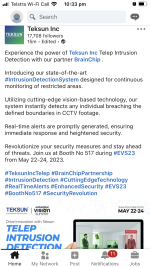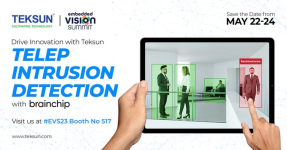Nothing concrete here to link Brainchip ;
Can’t help to think that we will be playing a hand in the evolution of drones & their use cases within the telecom industry.
14th March 2023
FEATURE
ATM Magazine had the opportunity to attend Mobile World Congress 2023 and the amount of discussion around this topic was more than could have been imagined before the event. The topic of drones and urban air mobility (UAM) is crossing many segments of the telecom industry. High altitude solutions are also foreseen to play a key role in telecommunications in the future.
The predictions for drones and UAM to scale are huge, but to make these figures a reality it’s necessary to fly beyond visual line-of-sight (BVLOS) and for that to happen telecoms are needed. Or more specifically their networks. Reliable communications are a must to achieve the market goals.
Telecoms across Europe are getting involved in offering connectivity to this market. This includes the likes of Vodafone, BT, Orange, Telefonica, Telekom, Swisscom, A1 and more. Some of these organisations will offer more than connectivity services, such as drone inspection services or public safety support with internal drone fleets. For the purposes of this article the focus is purely on connectivity.
Where things really got interesting is looking at the activities in South Korea. SK Telecom is partnering with Joby Aviation to commercialise UAM services. During the show there was a life-sized eVTOL simulator in the stand that allowed for attendees to take a virtual flight. The company is planning to launch an air taxi service in the future. The goal here goes far beyond simply providing connectivity. Although SK Telecom was the only Korean provider showcasing this topic at the show – KT and LG Uplus are also working on launching air taxi services and providing the UAM traffic management functionality.
Where’s the 5G (or 6G)?
Traditional mobile networks are configured to support communications on the ground, not up in the air. Which opens the discussion regarding new testing solutions to identify gaps in the 5G network that could impact communications when drones or UAM are flying. Testing solutions to alert mobile network operators of potential gaps in their networks also came into play at the show. Some of the companies supporting this requirement at the show are carrying over telecom testing solutions from their wider portfolio - Infovista specific to the ESN network in the UK for emergency air ambulances and Rohde & Schwarz.
Dimetor specialises in this topic with. It's AirborneRF message is clear, “you can’t do BVLOS without cellular, you can’t implement U-space without connectivity”. Working in the Aerial Connectivity Joint Activity (ACJA) of the Global UTM Association (GUTMA), they already have commercially deployed solutions helping telecoms identify network gaps in order to resolve.
But what if there’s no 5G or it proves too costly or difficult for telecoms to support deployment? High altitude solutions to the rescue. The High Altitude Platform Station (HAPS) Alliance was established in 2020 and has more than 60 members including players across the telecom and aviation industry. Executive members are Airbus, HAPS Mobile, Intelsat and Nokia. The alliance has three areas of focus with its working groups:
- Telecoms: lobbying the ITU to allow them to act as their own telecom if desired
- Aviation: working with EASA and CAAs for type certification of the flying vehicle
- Marketing: increase market education and awareness and get individuals comfortable with the concept.
HAPS can be used to provide connectivity in rural locations, support disaster recovery communications, maritime locations or event capacity communications that might overload the current network. They can also provide point-to-point and point-to-multipoint connectivity for industrial applications such as mining, gas and agriculture. An interesting topic is how does this fit with controlled airspace management. Although HAPS travel at about 75,000 ft, they still need to traverse controlled airspace for take-off and landing. Although, their last flight lasted 64 days! So likely not a high amount of traffic today, but a very different type of traffic to address.
Another organisation which shared their solution with
ATM was Stratospheric Platforms, who are a hydrogen high altitude solution. A startup currently at Series B with Deutsche Telekom as an investor, is working with DFS, NATS and CAA already to resolve the topic raised in the last paragraph. How to take off and land amongst commercial traffic. The business model is a little different here as their goal is to be ‘towers in the sky’ for telecoms. If you think about the towers you see on a daily basis to connect your mobile devices, this is a similar concept, but in the sky. Pretty cool.
Security
We can’t consider safety-critical communications without addressing cybersecurity. Trend Micro, a very familiar name in the telecom world, is looking to secure any vehicle or drone under the umbrella of its IoT security solutions. Think of a drone as a flying IoT device. Their solution manages the SIM device onboard providing the connection to determine if it is where it should be and ensure that bad actors are denied access.
Other options
Tupaia launched in 2020 focused on automotive solutions and has now expanded to offer GPS tracking for drones that can help to enable Remote ID, an important component of BVLOS. One of the key attributes of their solution is the accuracy for ensuring that a drone is landing where is should be and not a few centimetres off the target. Their cloud-based solution would require software with a sensor on the drone and they currently are speaking with drone manufacturers.
This article is just a high-level brush of all of the drone related topics circling in the world of telecom. One thing that was obvious is these two worlds need each other and will come closer and closer over the next few years. Especially with UAM becoming a reality.




